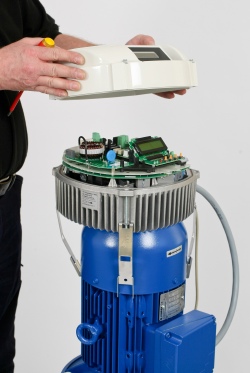How variable-speed pumps boost energy efficiency
Variable-speed drives bring considerable benefits top booster sets — including energy use and life — and they can be retrofitted, as Richard Sharp of Xylem explains.
In today’s society, many businesses and housing accommodation will need to use a water booster set to ensure that the water is pressurised sufficiently to reach all points of use throughout expansive or multi-storey buildings. One issue is that traditional booster sets work at a fixed speed, meaning the energy consumed remains the same even when demand for water is low. This is especially prominent in a building where there is a dramatic difference between times of peak and low demand time, such as in a block of apartments.
The second option available is the use of pressure-switch control, which can be provided as part of a booster set. Again, this system consumes large amounts of energy, and there is the added danger of pressure spikes in the system due to the pump operating at full speed. This can result in hydraulic noise and pressure surges.
However, to truly maximise the efficiency of a pumping system, it is vital to convert a traditional system from fixed to variable speed. A variable-speed pumping system will ensure the exact amount of water being used does not exceed the demand, significantly reducing energy bills. It is estimated that by changing a conventional fixed-speed into a variable-speed booster set can deliver a reduction of 50% on energy consumption, which in turn will deliver substantial monetary savings too.
But this begs the question, how easy is it to convert a traditional system from fixed to variable speed?
Many variable-speed drives are in fact universally compatible and can be retrofitted to any existing booster set. Some providers of booster set/ VSD solutions guarantee a pay-back period of less than two years (for example, the Lowara Hydrovar VSD from Xylem).
Installation of many modern VSDs is quick and easy for experienced pump providers. Once complete, the system will communicate electronically to ensure that the amount of energy being used reflects demand. With just the right amount of energy being consumed, the bill payer is no longer covering the cost of the original fixed-speed system which used a continual amount of pressure, even when demand was low. Variable-speed drives communicate throughout the booster set and determine how much pressure is needed to meet the demand currently being experienced.

However, while energy costs offer the most compelling reason for the conversion of fixed-speed pumps to variable speed, it is not the only advantage. Variable-speed drives offer a range of other benefits in protecting the water pumping system. A VSD offers dry-run protection by recognising if a system is empty following a water failure or power failure that has in inadvertently incapacitated the pumps. Once the pumps are back in action, the soft start fills the system slowly, to prevent fittings being damaged or shocked — reducing the velocity of the water up the riser. If allowed to instantly flow at maximum pressure, cavitation will eventually develop in the joints, leading to leaks and potential burst pipework.
Inside a booster set itself, parts that traditionally wear out quickly, like motor bearings, are protected because of the variable nature at which the pump now runs. It’s important to note, that most pumps running at full speed will require regular maintenance, whilst switching to a variable speed can give a longer life span for the pump and consumable parts, saving money over the longer term. Furthermore, with no requirement for large expansion tanks as a result of the VSD application, specifiers can considerably reduce the footprint of the applications, a major benefit in both new and retrofit applications.
In short, variable-speed drives can play a vital role in helping applications meet the exact requirements of the end-user, regardless of the fluctuating demand. With rising energy costs there is a clear need for facilities managers, specifiers and contractors to accurately identify fixed-speed pumping costs in building-services applications. Where there is opportunity to replace a fixed-speed pump with a variable-speed drive it should be taken, as the return on investment calculation is often very compelling.
Richard Sharp is general manager at Xylem.








